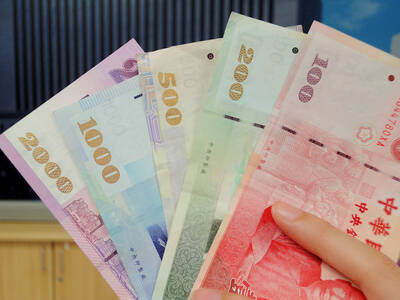The Brazilian National Day celebrations, this year, are being highlighted by the tour of the Brasil Tropical Carnival, in Taiwan. I would like to take advantage of this opportunity to inform that the Carnival is part of the Brazilian culture, as one of its most representative expressions. Carnival is a mixture of sensuality, joy of life and pleasure. Its multiform character is due to the riches of its origin and development.
West Africans were brought in gloomy slavery to Brazil. With them came deep beliefs under their singing. Their Gods, the "Orixas", came with them on their voyage to the New World. They all show themselves in the might of their drums and in the euphoria of their dances. Our natives, children of the Land, lived a simple life, in which there was no room for sin. In their conception, the world was a place of happiness, rich in flowers, fruits and animals. Life is a gift from their God, "Tupa", and they knew how to praise and preserve it. It was this simple wisdom that the Europeans found when they first cast anchor into Brazilian waters. They also brought their beliefs, their traditions and their music.
From the amalgamation of these three cultures, sprang a fourth: the Brazilian culture. One of its best known and most beautiful forms of expression is, perhaps, the Samba, a rhythm which allow the elements of each original culture to flow harmoniously together. Asking why the Brazilians need the Carnival seems to be, on the surface, a redundant question.
The common conception is that Brazilians have this eternal urge to party, and Carnival gives the chance to the entire nation to stop working and go crazy for four days. It helps to know that the Portuguese word for costume is "fantasia". The word for fantasy in Portuguese is also "fantasia". In English and other languages the words "costume" and "fantasy" take on more distinctive meanings. In Brazil, the costume IS the fantasy. Donning costumes, men cross dress as women, women as men, poor girls as princesses, white people as black people -- reality is turned effectively upside down - in the Carnival. It can be also noticed that, on the one hand, some people overdress up like royalty -- fantasy indeed -- and dance proudly down the streets in their elaborate costumes. On the other hand, some people dance half of completely naked - that is also a fantasy -- relating to the old times, when Brazil belonged only to her natives, who were completely integrated to their original environment.
Carnival in Brazil today is generally celebrated around most big cities starting on a Friday night and ends on Ash Wednesday morning that marks the beginning of Lent. In big cities there are usually designated "stadiums" called "sambodromos" where samba schools compete against one another for the best parade performance.
Besides watching the parade, rich people usually head off to exclusive parties held by private clubs, while others hang out in street parties all over the city. Every night during the Carnival, the masses start partying in the evening until the early morning, drop of exhaustion, sleep, and get ready again for another night.
I hope this short message will enlighten about the origins and modern days of Carnival in Brazil.

People can preregister to receive their NT$10,000 (US$325) cash distributed from the central government on Nov. 5 after President William Lai (賴清德) yesterday signed the Special Budget for Strengthening Economic, Social and National Security Resilience, the Executive Yuan told a news conference last night. The special budget, passed by the Legislative Yuan on Friday last week with a cash handout budget of NT$236 billion, was officially submitted to the Executive Yuan and the Presidential Office yesterday afternoon. People can register through the official Web site at https://10000.gov.tw to have the funds deposited into their bank accounts, withdraw the funds at automated teller

PEACE AND STABILITY: Maintaining the cross-strait ‘status quo’ has long been the government’s position, the Ministry of Foreign Affairs said Taiwan is committed to maintaining the cross-strait “status quo” and seeks no escalation of tensions, the Ministry of Foreign Affairs (MOFA) said yesterday, rebutting a Time magazine opinion piece that described President William Lai (賴清德) as a “reckless leader.” The article, titled “The US Must Beware of Taiwan’s Reckless Leader,” was written by Lyle Goldstein, director of the Asia Program at the Washington-based Defense Priorities think tank. Goldstein wrote that Taiwan is “the world’s most dangerous flashpoint” amid ongoing conflicts in the Middle East and Russia’s invasion of Ukraine. He said that the situation in the Taiwan Strait has become less stable

CONCESSION: A Shin Kong official said that the firm was ‘willing to contribute’ to the nation, as the move would enable Nvidia Crop to build its headquarters in Taiwan Shin Kong Life Insurance Co (新光人壽) yesterday said it would relinquish land-use rights, or known as surface rights, for two plots in Taipei’s Beitou District (北投), paving the way for Nvidia Corp to expand its office footprint in Taiwan. The insurer said it made the decision “in the interest of the nation’s greater good” and would not seek compensation from taxpayers for potential future losses, calling the move a gesture to resolve a months-long impasse among the insurer, the Taipei City Government and the US chip giant. “The decision was made on the condition that the Taipei City Government reimburses the related

FRESH LOOK: A committee would gather expert and public input on the themes and visual motifs that would appear on the notes, the central bank governor said The central bank has launched a comprehensive redesign of New Taiwan dollar banknotes to enhance anti-counterfeiting measures, improve accessibility and align the bills with global sustainability standards, Governor Yang Chin-long (楊金龍) told a meeting of the legislature’s Finance Committee yesterday. The overhaul would affect all five denominations — NT$100, NT$200, NT$500, NT$1,000 and NT$2,000 notes — but not coins, Yang said. It would be the first major update to the banknotes in 24 years, as the current series, introduced in 2001, has remained in circulation amid rapid advances in printing technology and security standards. “Updating the notes is essential to safeguard the integrity